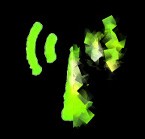 Most coffee shops have free Wi-Fi. Most businesses have Wi-Fi enabled. Most residential internet providers are now offering modem/routers with built in Wi-Fi. If you live in an apartment building or other high density area how many Wi-Fi networks can you see? There is no doubt that Wi-Fi is popular and getting more popular every day.
Most coffee shops have free Wi-Fi. Most businesses have Wi-Fi enabled. Most residential internet providers are now offering modem/routers with built in Wi-Fi. If you live in an apartment building or other high density area how many Wi-Fi networks can you see? There is no doubt that Wi-Fi is popular and getting more popular every day.
It is however not without problems. We have all had times where our Wi-Fi connection is operating normally one minute and the next disconnects with no explanation. Then a minute later it comes back. The following is a list of things that can disrupt your Wi-Fi network (and they may not all be under your control) :
- Your Neighbours’ Wi-Fi Networks
Most Wi-Fi networks operate at the very crowded 2.4 GHz frequency range. Although here in North America there are 11 distinct channels (14 in Japan), ONLY THREE of them don’t overlap (1, 6 and 11). This means that only 2 of your neighbours within range have the ability to use non-interfering channels (assuming you all pick different channels from 1, 6 and 11). Everyone else causes interference that the Wi-Fi network has to work around… This is called co-channel interference. The more devices that conflict the longer it takes for a device to talk since it has to wait for its turn therefore slowing down network communication.Solution: Start upgrading your devices to support the 5 GHz range. Newer devices including tablets, phones and laptops all support this frequency. This range is much less crowded and can provide a much better experience.
- Other Electronics
Baby Monitors, Remote Control vehicles, Cordless Phones, Microwave Ovens, Wireless Video Transmitters, Wireless speakers, Car Alarms or any other wireless devices that utilizes the 2.4 GHz frequency spectrum.Solution: If you own devices utilizing these frequencies, turn them off to see if the problem goes away. Replace any offending devices with units that don’t use 2.4 GHz or upgrade your Wi-Fi to 5 Ghz. - People
Do you sit right in line between a router (or access point) and others connecting to the wi-fi network? It’s unlikely that a single person will cause too much interference if the connecting device is fairly close. If you are farther away, someone sitting in front of the router may decrease your connection speed.
Solution: Don’t sit directly in the path of the Wi-Fi devices. If you are operating in a very busy location (Trade show, pub, dance club) where dozens, hundreds or thousands of people may interfere with your signal, raise it above everyone to ensure a clear path for the radio signals to get to the devices connecting. - Wi-Fi (Router or Access Point) Position
Many providers bring their connections into homes near the electrical panel. This makes it handy to keep things clean and out of sight. Considering many electrical panels here in North America are located in the corner of a basement this is one of the WORST places you could put your Wi-Fi device.Many Wi-Fi devices broadcast in a torus (or donut) shape. If you place your device in the bottom corner of your house, potentially less than 15% of the broadcast energy is actually being sent into your home. The rest is being sent outside, into the dirt around your foundation or to your neighbours (You’re paying for your internet connection so THEY can have a good signal right?!?!).Solution: The best place to put your router (or access point) is at a central place in your home or office. You may need to factor in how you will run wires to this location or whether the service provider can install it for you there. Think of central distance both up and down and side to side. Try not to place devices immediately overhead or below unless your device has multiple antennas. This will give you the best coverage by utilizing as much of the wireless broadcast coverage as possible. If your home or office is too big for just 1 device, we’ll cover multiple Access Points in a future article. See this link here for some detailed descriptions for proper placement: http://bit.ly/1qlnWvM
Also see the following link from Apple for further troubleshooting of Wi-Fi issues: https://support.apple.com/en-ca/HT201542


Having read this I believed it was extremely enlightening. I appreciate you spending some time and effort to put this article together. I once again find myself personally spending a lot of time both reading and posting comments.
Hi there, I read your new stuff regularly. Your humoristic style is awesome, keep up the good work!|